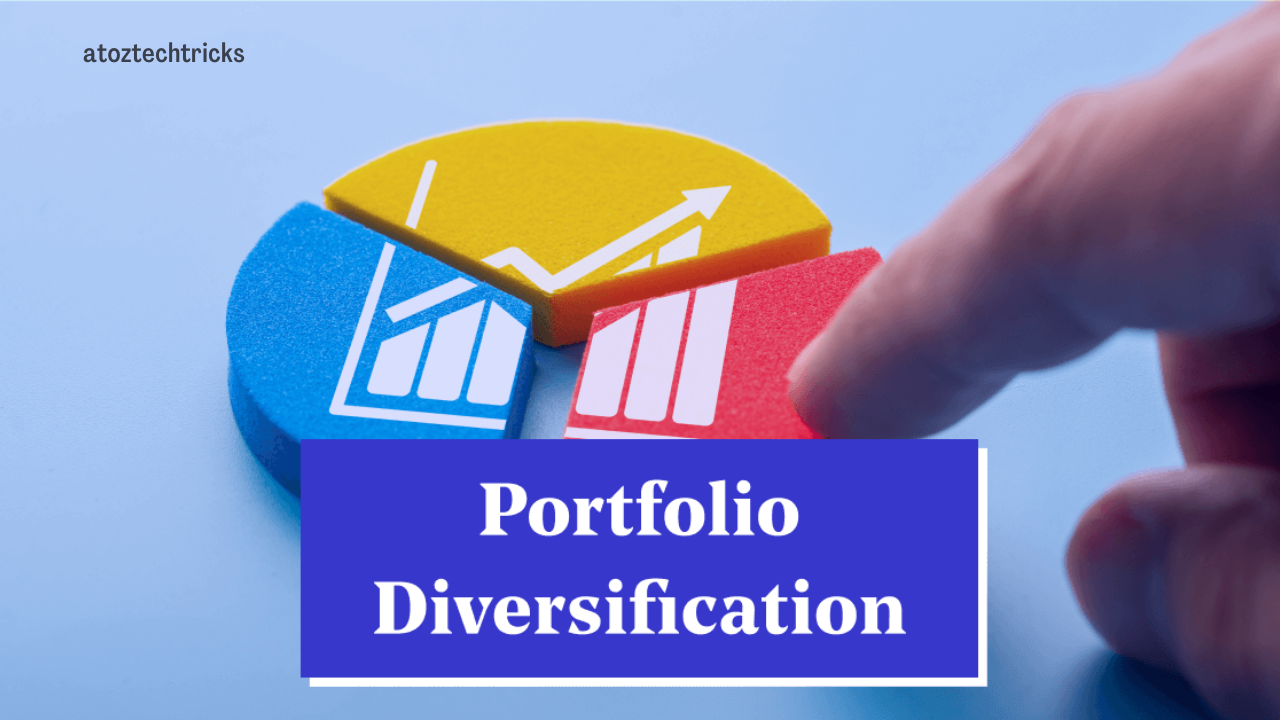Diversifying Your Investment Portfolio: A Comprehensive Guide
Investment is a key component of wealth building, yet it can be fraught with risks. One of the most effective strategies to mitigate these risks is diversification. Diversifying your investment portfolio is essential to achieving long-term financial success. This strategy involves spreading your investments across different asset classes, sectors, and geographies to minimize potential losses and enhance the possibility of gains.
In this article, we will explore the concept of diversification, its importance, and practical steps you can take to diversify your investment portfolio. We will also discuss common mistakes to avoid and how to maintain a diversified portfolio over time.
Understanding Diversification
Diversification is the practice of spreading your investments across various financial instruments, industries, and other categories to reduce risk exposure. The idea is that a diversified portfolio will, on average, yield higher returns and pose a lower risk than any individual investment within the portfolio.
At its core, diversification works on the principle that different investments react differently to the same event. For example, an economic downturn might negatively impact the stock market but could potentially increase the value of bonds. By holding both types of investments, the negative performance of one could be offset by the positive performance of the other.
The Importance of Diversification
- Risk Reduction: The primary reason for diversifying your portfolio is to reduce risk. By spreading investments across different assets, you protect yourself against the possibility of a significant loss in any single investment. If one asset underperforms, the others may compensate, thereby reducing the overall risk of your portfolio.
- Enhanced Return Potential: Diversification doesn’t just minimize risk; it also enhances return potential. Different assets perform well under different economic conditions. By holding a variety of assets, you increase your chances of owning something that performs well in any market condition.
- Smoothened Returns: A diversified portfolio tends to have more consistent returns over time. While some investments may experience volatility, others may provide stability, leading to a smoother overall performance of your investment portfolio.
- Protection Against Market Volatility: Markets are inherently unpredictable, and certain sectors or asset classes may face more volatility than others. By diversifying, you are less likely to be heavily affected by the downturn of a specific market sector.
Steps to Diversify Your Investment Portfolio
Diversifying your investment portfolio is not a one-size-fits-all approach. It requires a thoughtful strategy tailored to your financial goals, risk tolerance, and investment horizon. Here are some steps to help you build a diversified portfolio:
1. Assess Your Financial Goals and Risk Tolerance
Before diversifying your portfolio, you must understand your financial goals and risk tolerance. Are you investing for short-term gains, long-term wealth building, retirement, or another goal? Your risk tolerance refers to your ability and willingness to endure fluctuations in the value of your investments.
- Aggressive Investors: If you have a high-risk tolerance, you might be more comfortable investing in volatile assets like stocks, which have the potential for high returns but also higher risk.
- Conservative Investors: If you are risk-averse, you might prefer safer investments like bonds or fixed-income securities that offer more stability but lower returns.
Your financial goals and risk tolerance will guide your asset allocation, the process of deciding how much of your portfolio to invest in various asset classes.
2. Spread Investments Across Asset Classes
Asset classes are broad categories of investments with similar characteristics and behaviours in the market. The three primary asset classes are:
- Equities (Stocks): Represent ownership in a company and provide the potential for growth and income through dividends. Stocks are generally considered high-risk, high-reward investments.
- Fixed Income (Bonds): Loans made to corporations or governments that pay interest over time. Bonds are typically considered safer than stocks but offer lower returns.
- Cash and Cash Equivalents: Includes savings accounts, money market funds, and short-term government bonds. These are the safest assets but usually provide the lowest returns.
You should also consider alternative asset classes like:
- Real Estate: Investing in property can provide a steady income through rent and the potential for capital appreciation. Real estate often acts as a hedge against inflation.
- Commodities: Physical goods like gold, silver, oil, and agricultural products. Commodities can offer protection against inflation and diversify your portfolio away from traditional stocks and bonds.
- Cryptocurrencies: Digital assets like Bitcoin and Ethereum. Cryptocurrencies are highly volatile and should be approached with caution, especially for conservative investors.
3. Diversify Within Asset Classes
Once you’ve spread your investments across different asset classes, the next step is to diversify within each class. For example, if you’re investing in stocks, don’t just buy shares of a single company or industry. Instead, invest in a variety of companies across different sectors, such as technology, healthcare, finance, and consumer goods.
Similarly, within your bond allocation, consider diversifying across different types of bonds, such as government bonds, corporate bonds, and municipal bonds, and across different maturities.
4. Consider Geographic Diversification
Geographic diversification involves spreading your investments across different countries and regions. This strategy reduces the risk associated with economic or political instability in a single country.
- Domestic vs. International Stocks: Don’t limit your stock investments to your home country. Consider adding international stocks to your portfolio to benefit from growth in other regions.
- Emerging Markets: While riskier, emerging markets can offer higher growth potential compared to developed markets.
By investing globally, you gain exposure to different economic cycles, currencies, and industries, which can enhance the overall diversification of your portfolio.
5. Incorporate Index Funds and ETFs
Index funds and exchange-traded funds (ETFs) are excellent tools for diversification. They allow you to invest in a broad range of assets within a single investment vehicle.
- Index Funds: These funds track a specific market index, such as the S&P 500, providing exposure to a wide range of stocks within that index.
- ETFs: Similar to index funds, ETFs can track a broad market index or a specific sector, industry, or commodity. They are traded on stock exchanges like individual stocks, offering flexibility and diversification.
These investment options are ideal for investors who want to diversify their portfolios without the need to pick individual stocks or bonds.
6. Regularly Rebalance Your Portfolio
Over time, the performance of different assets will cause your portfolio’s asset allocation to drift from its original targets. For example, if your stocks perform well, they may end up making up a larger percentage of your portfolio than initially intended, increasing your risk exposure.
To maintain your desired level of diversification, it’s essential to regularly rebalance your portfolio. Rebalancing involves selling some of your investments in overperforming assets and buying more in underperforming assets to return to your original allocation.
7. Stay Informed and Adjust as Needed
Markets and economic conditions are constantly evolving, and your financial situation or goals may change over time. It’s crucial to stay informed about market trends, economic indicators, and changes in your personal life that may impact your investment strategy.
Periodically review your portfolio to ensure it aligns with your current goals and risk tolerance. If needed, adjust your investments to maintain diversification and achieve your financial objectives.

Common Diversification Mistakes to Avoid
While diversification is a powerful strategy, it can be easy to make mistakes that undermine its effectiveness. Here are some common pitfalls to watch out for:
1. Over-Diversification
While it might seem counterintuitive, it is possible to over-diversify. Over-diversification occurs when you spread your investments too thinly across too many assets, diluting your potential returns. Instead of reducing risk, over-diversification can lead to mediocre performance, as the gains from a few successful investments may be offset by the lacklustre performance of others.
To avoid over-diversification, focus on building a portfolio with a well-rounded selection of assets that align with your financial goals. It’s better to have a concentrated portfolio of high-quality investments than a sprawling one with too many low-potential assets.
2. Ignoring Correlation
Diversification is most effective when the assets in your portfolio are not closely correlated, meaning they don’t all move in the same direction in response to market events. If your portfolio is full of highly correlated assets, you may not be as diversified as you think.
For example, owning stocks in multiple technology companies might seem diversified, but these companies are likely to be affected by the same economic factors. Instead, consider adding stocks from different industries, bonds, real estate, or commodities to your portfolio to reduce correlation.
3. Neglecting Fees and Expenses
Some investments, such as mutual funds, index funds, and ETFs, come with management fees and expenses that can eat into your returns over time. While these fees might seem small, they can add up, especially if you’re holding multiple funds.
When diversifying your portfolio, be mindful of the costs associated with each investment. Opt for low-cost index funds or ETFs where possible, and avoid over-trading, which can increase transaction costs.
4. Chasing Performance
One of the biggest mistakes investors make is chasing performance, or investing in assets or sectors that have recently performed well, hoping they will continue to do so. This strategy often leads to buying high and selling low, the opposite of what successful investors aim to do.
Instead of chasing performance, focus on building a diversified portfolio based on your long-term financial goals and risk tolerance. Stick to your investment plan, even when market conditions are volatile, and avoid making impulsive decisions based on short-term market movements.
Investment Strategies: A Comprehensive Guide to Growing Your Wealth
The Role of Professional Advice in Diversification
Diversifying your investment portfolio is not always straightforward, especially if you’re new to investing or have a complex financial situation. In such cases, seeking professional advice can be invaluable. Financial advisors, investment managers, and other financial professionals can provide tailored advice based on your unique circumstances.
Benefits of Consulting a Financial Advisor
- Expert Knowledge: Financial advisors have extensive knowledge of market trends, investment products, and strategies. They can help you understand complex financial concepts and make informed decisions about asset allocation.
- Personalized Strategy: Advisors can develop a personalized investment strategy that aligns with your financial goals, risk tolerance, and investment horizon. This customized approach ensures that your portfolio is well-diversified and suited to your specific needs.
- Ongoing Monitoring and Adjustment: A financial advisor can monitor your portfolio’s performance and make adjustments as needed. They can help you rebalance your portfolio, adjust your strategy in response to changing market conditions, and ensure your investments continue to meet your goals.
- Access to Specialized Investments: Advisors may have access to investment products and opportunities that are not available to individual investors, such as private equity, hedge funds, or institutional-grade investments. These can provide additional diversification and potential returns.
- Behavioural Coaching: Investing can be emotional, especially during market downturns. Advisors can provide behavioural coaching to help you stay disciplined and avoid making impulsive decisions based on fear or greed.
Diversifying your investment portfolio is a fundamental strategy for managing risk and achieving long-term financial success. By spreading your investments across different asset classes, sectors, and geographies, you can reduce your exposure to individual risks and enhance the potential for positive returns.

Key steps to effective diversification include assessing your financial goals and risk tolerance, spreading investments across various asset classes, diversifying within asset classes, considering geographic diversification, and utilizing index funds and ETFs. Regularly rebalancing your portfolio and staying informed about market trends are also crucial for maintaining a well-diversified portfolio.
Avoid common pitfalls such as over-diversification, ignoring correlation, neglecting fees, and chasing performance. If you find the process challenging or complex, seeking professional advice from financial experts can help you navigate the intricacies of diversification and develop a strategy that aligns with your goals.
By taking a thoughtful and informed approach to diversification, you can build a resilient investment portfolio that stands the test of time and helps you achieve your financial objectives.
Mastering Debt Management – A Comprehensive Guide to Financial Freedom




Post Comment